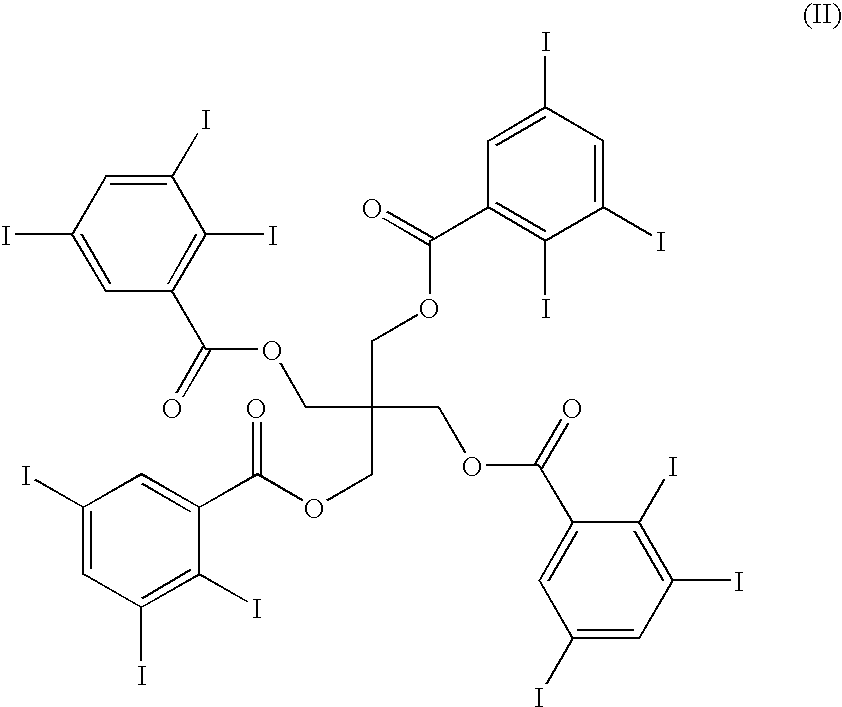Organic radiographic contrasting agents for medical devices
a radiographic contrast agent and organic technology, applied in the field of organic contrasting agents, can solve the problems of inability to visualize medical devices made from these polymers by radiographic imaging, inability to detect inflammatory reactions or other side effects, and inability to radiographic imaging
- Summary
- Abstract
- Description
- Claims
- Application Information
AI Technical Summary
Problems solved by technology
Method used
Image
Examples
example
Synthesis of a Radiographic Contrasting Agent of Formula (I)
[0026] The inventive radiographic contrasting agent of formula (I) was prepared through the synthetic route as shown in Scheme 2:
[0027] A mixture of compound (III) (40 g, 0.08 mol) and thionyl chloride (20 g, 0.017 mol) in THF (300 mL) was heated to reflux for 40 minutes. Then the solvent was removed by a rotavapor. The resulting dry solid was re-crystallized in hexane. This process provided 20 g of compound (IV), which had a yield of 49%.
[0028] To a solution of compound (V) (4.06 g, 0.028 mol) in THF (400 mL) and triethylamine (16 mL), i.e., TEA, was slowly added a solution of compound (IV) (51.8 g, 0.1 mol) in THF (150 mL) at 0° to 5° C. in a period of 10 to 15 minutes. The resulting reaction mixture was then stirred at room temperature for 2 hours. Next, the reaction mixture was added to 1000 mL of water. The solid was collected by filtration, washed with saturated sodium carbonate (3×100 mL), water (3×100 mL), and w...
PUM
| Property | Measurement | Unit |
|---|---|---|
| Biodegradability | aaaaa | aaaaa |
| Opacity | aaaaa | aaaaa |
Abstract
Description
Claims
Application Information
 Login to View More
Login to View More - R&D
- Intellectual Property
- Life Sciences
- Materials
- Tech Scout
- Unparalleled Data Quality
- Higher Quality Content
- 60% Fewer Hallucinations
Browse by: Latest US Patents, China's latest patents, Technical Efficacy Thesaurus, Application Domain, Technology Topic, Popular Technical Reports.
© 2025 PatSnap. All rights reserved.Legal|Privacy policy|Modern Slavery Act Transparency Statement|Sitemap|About US| Contact US: help@patsnap.com



